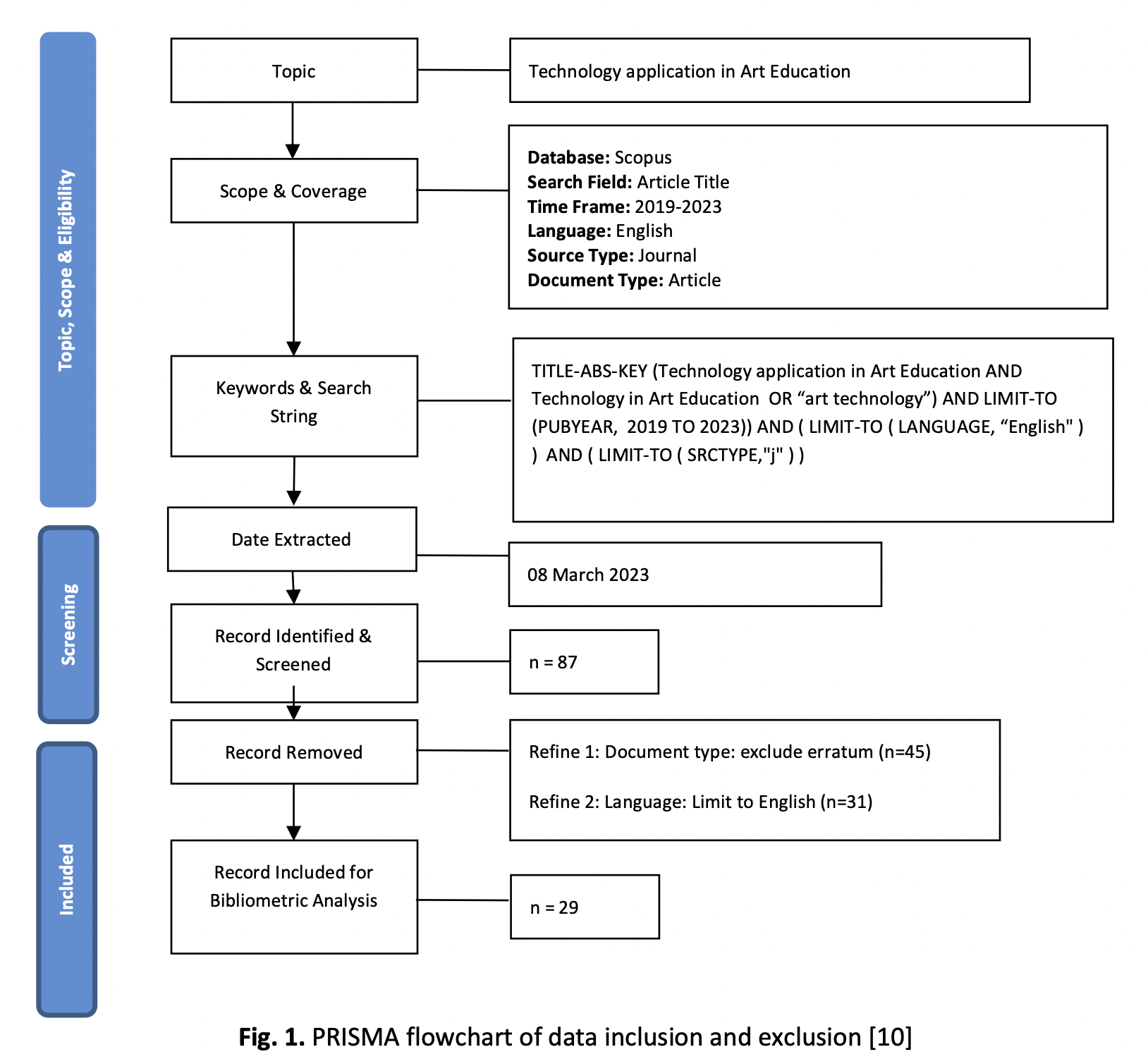Uncovering Emerging Trends in Technology and Art Education: A Bibliometric Mapping Analysis
DOI:
https://doi.org/10.37934/araset.41.1.6475Keywords:
Art Education, Bibliometric Analysis, Integration, Technology Application, Educational ComputingAbstract
The rapid advancements in technology have opened up new doors for both teachers and students to explore, learn, and create in innovative ways. However, this progress has also brought forth new challenges and complexities that demand a deeper understanding of the use of technology in art education. In this context, bibliometric analysis has emerged as a potent tool to examine emerging trends in the intersection of technology and art education. Employing the PRISMA approach (Preferred Reporting Items for Systematic Review and Meta-Analysis) and utilizing relevant Scopus databases with standardized procedures that ensure comprehensiveness and replicability, this bibliometric study identified 29 articles. The number of published articles in 2022, at 12, exceeded that of 2021, with only 6. Furthermore, the study highlighted the top 10 countries conducting research in technology and art education, with China having 17 studies, followed by the United States with 3 and Australia with 2. The top three keywords in current research trends are Education Computing, with 9 publications, E-learning, with 8, and Virtual Reality, with 7. Other keywords that relate to technology and art education are also pertinent to the research. These findings suggest that there is a growing interest in utilizing innovative research techniques to examine the intersection of technology and art education. As emerging technologies broaden the horizons of art-making and learning, they offer new avenues for creativity and innovation, but they also demand careful consideration of their potential benefits and risks. Educators and researchers will need to work in tandem to design effective strategies for integrating these technologies in ways that encourage creativity, learning, and social justice.
Downloads


























